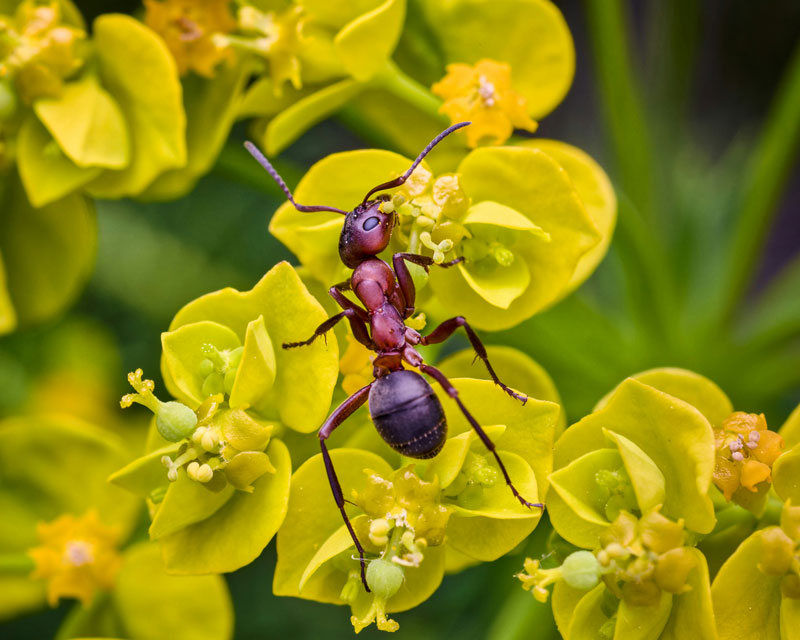The School of Life Sciences’ social insect research group (SIRG) studies the evolution and organization of insect societies from the level of the gene up to their ecology and evolution. Our research includes mechanistic studies of the neural and biochemical foundations of behavior and physiology, examined through questions aimed at understanding the evolution of social behavior.
We ask fundamental questions

Our research
We combine classical behavioral and ecological approaches with a wide range of cutting-edge techniques including:
- bio-imaging
- computer simulations
- electrophysiology
- epigenetics
- gas chromatography/mass spectrometry
- genomics
- metabolomics
- transcriptomics
Excellence in research
We have a vibrant research environment, with ten core faculty and several affiliated faculty, postdocs, and graduate and undergraduate students conducting research. SIRG faculty and students meet weekly to discuss ongoing projects and hear presentations from leading scientists from around the world.
Our diverse field projects occur internationally from the tropics of central and South America, to the rangelands of Asia and throughout the western U.S. These projects focus on the incredible diversity of social insect species in the desert Southwest.
Graduate students with the social insect research group regularly receive National Science Foundation graduate research fellowships, doctoral improvement grants, and major research honors such as the Eickwort award. Our graduate students are enrolled in PhD programs in animal behavior, biology, evolutionary biology and neuroscience.
You will see publications from SIRG members regularly appear in journals such as SCIENCE, NATURE, PNAS, PLOS Biology, Current Biology and Proceedings of the Royal Society B.
Research topics
- Aging
- Behavioral Neuroscience
- Bioimaging
- Electrophysiology
- Biomimicry
- Caste determination
- Climate change
- Complexity and self-organization
- Communication
- Cooperation and conflict
- Decision-making
- Division of labor
- Ecology of desert ants
- Environmental contaminants/toxicology
- Epigenetics
- Evolutionary ecology
- Learning and memory
- Metabolism/metabolomics
- Phenotypic plasticity
- Scaling
- Social evolution
- Social physiology
- Sociogenomics
- Toxicology and stress (pesticides, fungicides, heavy metals and temperature)
Methods
- Agent-based models (and mean field modeling)
- Automated video analysis
- Behavioral experimentation
- Cell visualization techniques
- Computational neuroscience
- Gas chromatography/mass spectrometry
- Genotyping for paternity
- Histology and tomography
- Linkage mapping
- Locomotion kinematics/high speed video
- Metabolic rate/metabolomics
- QTL analyses
- RNAi
- RNAseq
- Single sensillum recording
- Standard molecular genetic tools
Research animals
Social insects
- Acromyrmex
- Apis mellifera, cerana, florea, dorsata
- Aphaenogaster (=Novomessor)
- Camponotus
- Harpegnathos
- Messor
- Monomorium
- Pogonomyrmex
- Stingless bees
- Temnothorax
- Veromessor
- Zootermopsis
- Plus many others
Solitary insects
- Beetles
- Nasonia
- Drosophila
- Locust
